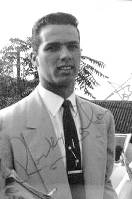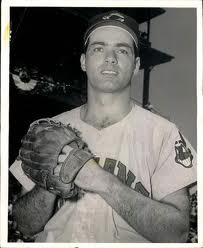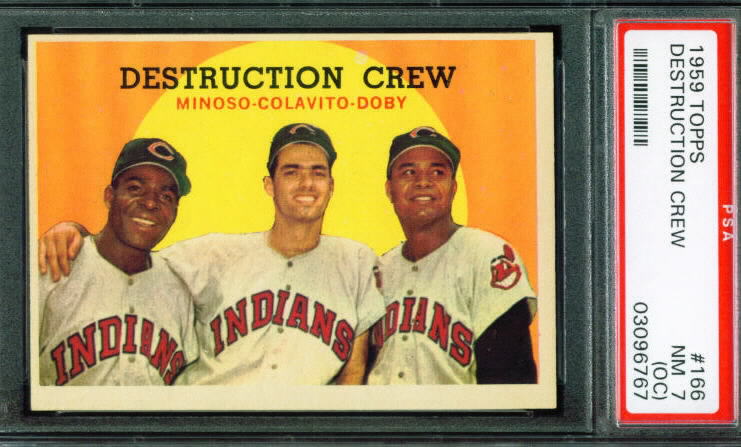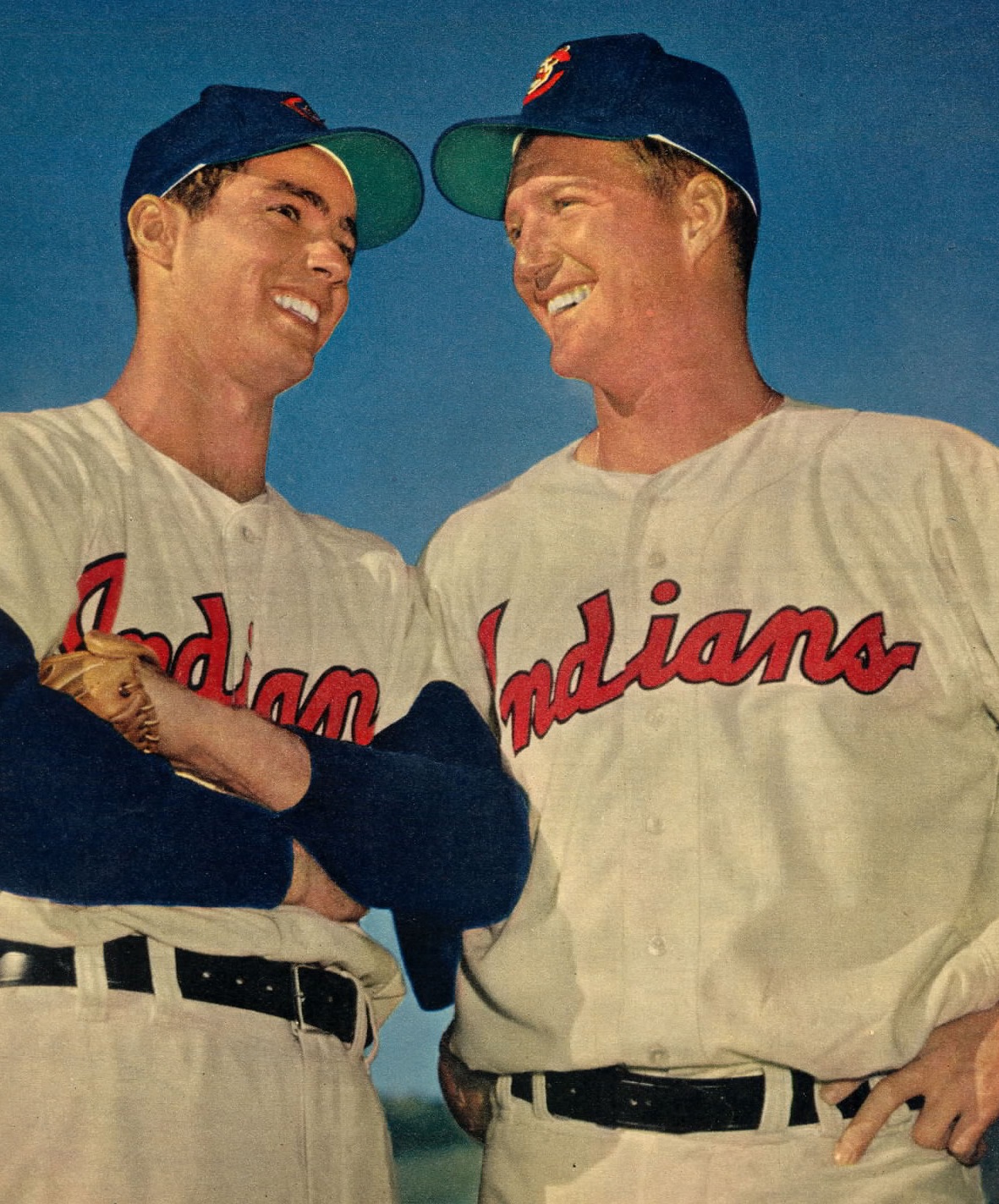 Indians Archive
Indians Archive  Tribe Game Vault: 8/13/58. Rocky Colavito Has a Night to Remember
Tribe Game Vault: 8/13/58. Rocky Colavito Has a Night to Remember
 “Greg, the Indians stink, and -“
“Greg, the Indians stink, and -“
Ah-ah-ah, yes, I know.
”Before the season, you knew their flaws; all the fans knew them -“
Yep. Yep, yep, yep…
“Even as Chris Perez was pimping attention toward himself at the expense of the fans, Manny Acta knew it -“
Uh-huh, yeah…
“And this owner - the one whose family said they’d spend when it was time? He failed us over last winter, and again this past July at the trade deadline –“
Sigh…
“In a winnable division whose best teams strengthened themselves through trades… Hey… Aren’t you going to, like, interrupt me?”
(Blink. Blink again.)
“Uh, and, and players were absolutely available to bolster the lineup. It would have taken money- short term money. The price of doing business in major league baseball.”
I’m not going to ask you if you feel better. I will not patronize you, and I am right there with you. Your cupboard-is-bare prognosis is pretty much on target, as well.
What I am going to do is return to one of my core philosophies of what spectator sports are for. They exist for my enjoyment. So wins and losses be damned: I feel like revisiting a feel-good story of the Cleveland Indians of old. Let’s spin the giant television game show-style roulette wheel and see where it stops… Ah. A late-summer doubleheader at the old Stadium in 1958. I remember it well.
Actually, in 1958, I was still years from being born. But you betcha, I would have really been into it.
On August 13, the Detroit Tigers were in town for a scheduled doubleheader. Neither the Tigers nor the Tribe were contending that year. The Indians were still living off of their dominant 1954 season, when they won a record 111 out of 154 games and took the American League pennant. 2B Bobby Avila and CF Larry Doby remained in the lineup from that championship season, but that was it. Frank “Trader” Lane was in his second season of completely turning over the roster in an attempt to rekindle excitement in the place of the recently departed Hank Greenberg. (Lane is rightly vilified for blowing up the Tribe. But during his tenure, Greenberg- still a part owner and on the board of directors- wanted to move the Indians. Minneapolis-St. Paul was an option, and Houston had placed a bid.)
 Rocky Colavito had progressed through the Indians’ farm system with roommate and fellow prospect, pitcher Herb Score. Imagine that 1954 team, with Colavito and Score in the wings. They were both promoted to the majors in 1955. The Rock faced a crowded outfield, with Doby, RF Al Smith and the newly-acquired LF, Ralph Kiner. Doby and Kiner were on the downside of Hall of Fame careers. Colavito was sent back down to AAA Indianapolis, and continued to display his power and incredible outfield arm. He finished the season strong, back up with the major league Tribe.
Rocky Colavito had progressed through the Indians’ farm system with roommate and fellow prospect, pitcher Herb Score. Imagine that 1954 team, with Colavito and Score in the wings. They were both promoted to the majors in 1955. The Rock faced a crowded outfield, with Doby, RF Al Smith and the newly-acquired LF, Ralph Kiner. Doby and Kiner were on the downside of Hall of Fame careers. Colavito was sent back down to AAA Indianapolis, and continued to display his power and incredible outfield arm. He finished the season strong, back up with the major league Tribe.
He was expected to take an outfield spot in 1956. However, a slow start caused another return to the minors. To this point, he had imitated the batting style of New York Yankee Joe DiMaggio; Indians manager Al Lopez decided it was time to ask Colavito to stand more upright in the batter’s box. Rocky worked on this in his last, three-week minor league stint. Upon returning to Cleveland, he hit well over the rest of the season.
1957 was the season in which Herb Score was struck in the eye with a line drive, to which most observers attributed his shortened career. Colavito hit for power that season, although his average dropped.
In 1958, Rocky Colavito spelled Mickey Vernon at first base, and Roger Maris in right field. Rocky pleaded with manager Bobby Bragan, promising he’d hit 35 home runs if he could play in right field every day. The Tribe traded Maris in June. Rocky Colavito’s career arc soared (and yes, he hit 41 dingers in 1958).
 Back to the double header on August 13, attended by 14,351. In the first game, Tigers starter Paul Foytack improved to 9-10 as he scattered 11 hits in a complete game victory. Gary Bell started for the Tribe and took the loss, giving up 6 runs, all earned, in four innings. Tigers leadoff hitter and CF Harvey Kuenn went 2 for 5 and a run scored, upping his average to .327. RF Al Kaline and the rest of their lineup each had at least one hit in the game.
Back to the double header on August 13, attended by 14,351. In the first game, Tigers starter Paul Foytack improved to 9-10 as he scattered 11 hits in a complete game victory. Gary Bell started for the Tribe and took the loss, giving up 6 runs, all earned, in four innings. Tigers leadoff hitter and CF Harvey Kuenn went 2 for 5 and a run scored, upping his average to .327. RF Al Kaline and the rest of their lineup each had at least one hit in the game.
The Tribe’s heroes on offense were 3B Vic Power, with a single in the bottom of the 1st inning to plate Avila; and PH Jay Porter, who homered in the 9th. Rocky Colavito, hitting out of the seven hole, had a single and a walk.
The pitching matchup in the nightcap feature Tigers’ journeyman Herb Moford vs. Hoyt Wilhelm of the Indians. The knuckleballer was with the Tribe for a proverbial ‘cup of coffee’ at this time; his long career would one day land him in the Hall of Fame.
Top of the 1st: Wilhelm’s knuckleball was working. He struck out Kuenn, then retired 3B Reno Bertoia on a fly ball to center field. Kaline whiffed- but on the passed ball by Indians C Russ Nixon (commonplace with the knuckler), he reached first base. 1B Gail Harris also whiffed, with Nixon corralling Strike Three. 0-0.
Bottom of the 1st: Avila was hit by a pitch, and stole second base. That was it. 0-0.
Both pitchers sailed through the next few innings. In the…
Top of the 4th: Harris followed a Bertoia single and a Kaline pop fly to short with a 2-run home run. Wilhelm struggled through the inning, retiring the side after subsequently allowing a single, a stolen base, and a walk. 2-0, Tigers.
Bottom of the 4th: Tribe 1B Vic Power clobbered a lead-off home run off Moford. 2-1, Tigers.
The next few innings were quiet, until the…
Top of the 7th: Wilhelm tired. He allowed a lead-off single to left by 2B Frank Bolling. C Red Wilson singled to right. With SS Coot Veal at the plate, Nixon suffered another passed ball. Runners on second and third with nobody out.
Indians manager Joe Gordon had used his main relief pitchers, Don Mossi and Ray Narleski, in the first game of the twinbill. He decided to take a novel approach to relieving Wilhelm- he called in a position player whose arm Herb Score had touted. Score talked about the player as having the kind of arm that could routinely be used in winning bets by throwing balls from home plate over the center field wall, over 400 feet away. Up to the pitching mound trotted Rocky Colavito.
 The pitcher retired Veal on a sacrifice fly ball to left. After walking the pitcher Moford, he induced Kuenn to hit a foul fly pop to first. He then got Bertoia on a fly ball to third. 3-1, Tigers, but the crowd was abuzz.
The pitcher retired Veal on a sacrifice fly ball to left. After walking the pitcher Moford, he induced Kuenn to hit a foul fly pop to first. He then got Bertoia on a fly ball to third. 3-1, Tigers, but the crowd was abuzz.
Bottom of the 7th: Tribe LF Minnie Minoso walked, before Doby flied out to left. Up came Colavito… who tagged a triple to left. With the Tribe down by a run, he was stranded there as PH Vic Wertz struck out and RF Gary Geiger grounded out, 1B to P. 3-2, Tigers.
Top of the 8th: Colavito continued to pitch well- and field his position. Kaline hit a ground ball to the mound for the first out. After a Harris walk, LF Charlie Maxwell flied out to center. Colavito retired Bolling- on a strikeout, looking! 3-2, Tigers.
Bottom of the 8th: Avila walked with one out, and advanced to second on a wild pitch, but was stranded there. 3-2, Tigers.
Top of the 9th: Rocky Colavito walked to the mound amid the cheering appreciation of the home crowd. He walked C Red Wilson- and then issued a balk. But Veal, Moford and Kuenn went lineout to short, pop fly to second and lineout to third to end the inning. 3-2, Tigers.
Bottom of the 9th: Moford had little trouble setting the Indians down in order, for the complete-game win. Rocky Colavito was the two-out batter- and struck out trying to tie the game with one swing of the bat.
The Cleveland legend of Rocky Colavito grew immeasurably on that night in August of 1958. Within two years, Frank Lane would trade him, allegedly amid utterances of Italian slurs. The player the Indians received in return was the Tigers’ Harvey Kuenn. The trade didn’t work out very well for either team. Kuenn wasn’t wired to be able to weather the scrutiny of replacing such a popular player. Colavito performed fairly well in Detroit, but never came close to being such a fan favorite there. He bounced around Baseball in the ensuing years, returning to Cleveland (in another questionable trade). While with the Yankees, in 1968, he pitched in another major league game- this time, earning a victory. Over the Detroit Tigers.
Thank you for reading. Sources included The Cleveland Indians Encyclopedia, Schneider (where there is an actual photo of Colavito pitching for the Tribe); baseball-reference.com; Nathan Hale at baseballlibrary.com; sabr.org.
Click here for some great photos.
Rocky and Herb:

- NBA Announces 2013-2014 Schedule
- Browns Ink Sharknado
- Sharknado A No-Show For Rookie Camp
- Trent Richardson Out Until Training Camp
- Browns Sign Brandon Jackson
- Carrasco Suspended Eight Games
- Browns Add to Wide Receiver Depth with David Nelson
- Browns Need to Learn from Past Draft Mistakes
- Browns Release Chris Gocong and Usama Young
- Browns Missing on Grimes Disappointing, But Not The End
The TCF Forums
- Chris Grant's first 3 drafts
Kingpin74 (Tuesday, January 21 2014 10:13 AM) - The 2014 Offseason Thread
googleeph2 (Tuesday, January 21 2014 9:36 AM) - 2015 Recruiting
furls (Tuesday, January 21 2014 6:57 AM) - Mike Brown
YahooFanChicago (Monday, January 20 2014 11:15 PM) - Movies coming out
HoodooMan (Monday, January 20 2014 9:34 PM) - 2014 Hoops Hockey Hijinx
jpd1224 (Monday, January 20 2014 4:44 PM) - 2014 Recruiting
jclvd_23 (Monday, January 20 2014 2:26 PM) - Wish List - #4 Pick
Hikohadon (Monday, January 20 2014 1:26 PM) - Official- Browns Coach Search/Rumors
OldDawg (Sunday, January 19 2014 6:48 PM) - #1 overall pick Anthony Bennett
TouchEmAllTime (Sunday, January 19 2014 1:28 PM)



